The Rural Gentrification and Its Impacts in Traditional Villages―A Case Study of Xixinan Village, in China
Abstract
:1. Introduction
2. Literature Review
3. Methods
3.1. Introduction to Xixinan Village
3.2. Research Process and Data Processing
4. Results Analysis
4.1. The Development Stage of Rural Gentrification in Xixinan Village
4.1.1. Newcomers’ Setting-in Stage (2009–2014)
At that time, we also responded to the call of ‘One Thousand Houses in One Hundred Villages in Huangshan City’ to protect ancient villages and buildings. We came to Xixinan Village and bought an ancient dwelling―Youranju, which was moved from Yansi Town. At that time, the government wanted to build the New Fourth Army Memorial Hall and some house needs to be demolished. To protect these ancient buildings, I bought them and moved them to Xixinan Village (A6).
4.1.2. Rural Gentrification Development Stage (2015–Present)
4.2. Impacts of Rural Gentrification in Xixinan Village
4.2.1. Population Growth
In the past few years, the development of Xixinan has changed a lot, and it has turned the world upside down. In the past, this street (Xibian Street) was like a place to shoot Liaozhai, and it was very deserted. Now, it’s totally different. Our family used to work in Wenzhou for 15 years. In 2016, we returned to our hometown to open a homestay. There is an old ancestral house in the family, which cannot be abandoned. I want to renovate it and protect it well. (C1).
I am a native of Xixinan Village and a designer. I have worked in Shenzhen City before, and now the village has developed well. I came back in 2017 and opened a homestay inn in the village. I made the homestay, house decoration and design myself. (C3).
Our boss opened a homestay inn a long time ago, but it was in the Huangshan Scenic Spot before. The previous year, the boss moved to Xixinan. We followed the boss here. (D24).
My family lives in Tunxi Old Street, and it is very convenient to drive from here. (D20).
4.2.2. Landscape Changes
I designed this table stove myself, and we teach them how to do it with the specialists and carpenters! It will be warm when my guests can chat around the table stove.
The streets in the village have become much cleaner, the stone road has been repaired, there is no garbage and the overall landscape has become more beautiful, which makes our lives very happy. (D11).
Now, we also all know how to take care of the environment, keep the streets clean and stop littering. Now, the village is cleaned every day, and the streets are clean. I also responded to the government’s request and planted flowers and plants in the yard and watered them with rice-washing water every day, and they grew very well. (D16).
4.2.3. Economic Transformation
Before 2009, ordinary houses could be bought for tens of thousands. For example, there is an old house in Xibian Street that is more than 80 sqm and more than 80,000. It is very broken, which is equivalent to buying a foundation. But if you buy it now, you need at least 2 million, and you may not sell it. An ordinary house with two floors of 100 sqm, more than 1 million. (A1).
The house in Xixinan–Shang Village is now 1.6 million, and there is no real estate certificate. The villagers in Xixinan Village were originally moved to it. The land price was cheap, but the villagers did not move, resulting in the land of Shang Village being idle. Later, the government entrusted immigrants to rent and sell this house. At that time, it was sold at 400,000. (D6).
4.2.4. Cultural Turn
We feel that the ancient dwellings of Huizhou culture are very precious and need to be protected, and we need to do our part for it. To protect ancient dwellings and inherit our traditional culture, we came to this village with such mentality. (A1).
Xixinan Village itself is a pure land, a wilderness place. What urban people come to see here, what they see is wild, natural, the original ecology (where human footprints have not reached). But the government has pulled up the turf and wild vines, destroying this environment. So, we must protect the wilderness. (A2).
5. Discussion
5.1. Consumption-Oriented
Coming to Xixinan Village is experiencing a kind of life looking at the mountains. You can see the mountains; see the water and remember to live in nostalgia, leisure, quiet and comfortable. (A9).
The reason why I chose to stay here is because of the connection with ‘Huizhou’, and because of the ‘undeveloped’ original ecological style in Xixinan Village. (A11).
I like living in Xixinan not only because of its beautiful environment and fresh air but also because there is a social circle. In this circle, we have similar cultural preferences, values and ideologies, and we all enjoy the current rural life. (A9).
Here, far from the hustle and bustle of the city, you can’t see the row upon row of prosperous high-rise buildings, and you can’t hear the noise of the busy traffic, but there is the ‘return to the countryside’ that the ancients yearned for, and it is full of paradise-like secrets and detachment. (A11).
5.2. Production-Oriented
5.3. The Unique Role of Government
6. Conclusions and Limitations
6.1. Conclusions
6.2. Limitations
Author Contributions
Funding
Institutional Review Board Statement
Informed Consent Statement
Data Availability Statement
Conflicts of Interest
References
- Glass, R. London: Aspects of Change; MacGibbon and Kee: London, UK, 1964; p. 30. [Google Scholar]
- Parsons, D. Rural Gentrification: The Influence of Rural Settlement Planning Policies. Research Paper No 3; Department of Geography University of Sussex: Brighton, UK, 1980. [Google Scholar]
- Solana-Solana, M. Rural gentrification in Catalonia, Spain: A case study of migration, social change and conflicts in the Empordanet area. Geoforum 2010, 41, 508–517. [Google Scholar] [CrossRef]
- Alonso González, P. Heritage and rural gentrification in Spain: The case of Santiago Millas. Int. J. Herit. Stud. 2017, 23, 125–140. [Google Scholar] [CrossRef]
- Phillips, M. Counterurbanisation and rural gentrification: An exploration of the terms. Popul. Space Place 2010, 16, 539–558. [Google Scholar] [CrossRef]
- Yang, J.; Hui, E.C.; Lang, W.; Li, X. Land ownership, rent-seeking, and rural gentrification: Reconstructing villages for sustainable urbanization in China. Sustainability 2018, 10, 1997. [Google Scholar] [CrossRef]
- Woods, M. New directions in rural studies? J. Rural. Stud. 2012, 28, 1–4. [Google Scholar] [CrossRef]
- National Statistics Office. Chinese Statistical Yearbook-2020; China Statistics Publishing House: Beijing, China, 2020.
- Yu, K.J. New going to the mountains and going to the countryside movement and heritage village protection and restoration: Practice in Xixinan village, Huizhou. Bull. Chin. Acad. Sci. 2017, 32, 696–710. [Google Scholar]
- Fan, J.; Guo, R. Re-recognition of precondition and driving mechanism of new-type urbanization. Geogr. Res. 2019, 38, 3–12. [Google Scholar]
- He, S.J.; Qian, J.X.; Xu, Y.X. Spatial-temporal evolution of rural gentrification amidst rapid urbanization: A case study of Xiaozhou village, Guangzhou. Acta Geogr. Sin. 2012, 67, 1044–1056. [Google Scholar]
- Qian, J.; He, S.; Liu, L. Aestheticisation, rent-seeking, and rural gentrification amidst China’s rapid urbanisation: The case of Xiaozhou village, Guangzhou. J. Rural. Stud. 2013, 32, 331–345. [Google Scholar] [CrossRef]
- Zhang, J.; Wang, M.J. The characteristics of the life space remodeling of tourism village during rural gentrification: The case of Cuandixia in Beijing. Hum. Geogr. 2017, 32, 137–144. [Google Scholar]
- Tan, H.Y.; Zhou, G.H. Evolution process and mechanism of rural gentrification based on actor-network theory: A case study of Panyang River Basin of Bama County, Guangxi. Acta Geogr. Sin. 2022, 77, 869–887. [Google Scholar]
- Cloke, P.; Phillips, M.; Thrift, N. The new middle classes and the social construction of rural living. In Social Change and the Middle Classes; Butler, T., Savage, M., Eds.; UCL Press: London, UK, 1995; pp. 220–240. [Google Scholar]
- Nelson, P.B.; Oberg, A.; Nelson, L. Rural gentrification and linked migration in the United States. J. Rural. Stud. 2010, 26, 343–352. [Google Scholar] [CrossRef]
- Hines, J.D. The post-industrial regime of production/consumption and the rural gentrification of the New West archipelago. Antipode 2012, 44, 74–97. [Google Scholar] [CrossRef]
- Beauregard, R. The chaos and complexity of gentrification. In Gentrification and the City; Smith, N., Williams, P., Eds.; Unwin Hyman: London, UK, 1986. [Google Scholar]
- Darling, E. The city in the country: Wilderness gentrification and the rent gap. Environ. Plan. A 2005, 37, 1015–1032. [Google Scholar] [CrossRef]
- Guimond, L.; Myriam, S. Gentrification and neo-rural populations in the québec countryside: Representations of various actors. J. Rural. Stud. 2010, 26, 449–464. [Google Scholar] [CrossRef]
- Davidson, M.; Lees, L. New-build ‘gentrification’ and London’s riverside renaissance. Environ. Plan. A 2005, 37, 1165–1190. [Google Scholar] [CrossRef]
- Ghose, R. Big sky or big sprawl? Rural gentrification and the changing cultural landscape of Missoula, Montana. Urban Geogr. 2004, 25, 528–549. [Google Scholar]
- Woods, M. Engaging the global countryside: Globalization, hybridity and the reconstitution of rural place. Prog. Hum. Geogr. 2007, 31, 485–507. [Google Scholar] [CrossRef]
- Ghaffari, L.; Klein, J.L.; Angulo Baudin, W. Toward a socially acceptable gentrification: A review of strategies and practices against displacement. Geogr. Compass. 2018, 12, e12355. [Google Scholar] [CrossRef]
- Chan, J.H.; Iankova, K.; Zhang, Y.; McDonald, T.; Qi, X. The role of self-gentrification in sustainable tourism: Indigenous entrepreneurship at Honghe Hani Rice Terraces World Heritage Site, China. J. Sustain. Tour. 2016, 24, 1262–1279. [Google Scholar] [CrossRef]
- Stockdale, A. The diverse geographies of rural gentrification in Scotland. J. Rural. Stud. 2010, 26, 31–40. [Google Scholar] [CrossRef]
- Phillips, M. Differential productions of rural gentrification. Geoforum 2005, 36, 477–494. [Google Scholar] [CrossRef]
- Phillips, M. Rural gentrification and the processes of class colonisation. J. Rural. Stud. 1993, 9, 123–140. [Google Scholar] [CrossRef]
- Smith, N. Toward a theory of gentrification: A back to the city movement by capital, not people. J. Am. Plan. Assoc. 1979, 45, 538–548. [Google Scholar] [CrossRef]
- Ilbery, B. The Geography of Rural Change; Longman: Harlow, UK, 1998. [Google Scholar]
- Nelson, L.; Trautman, L.; Nelson, P.B. Latino Immigrants and Rural Gentrification: Race, “Illegality” and Precarious Labor Regimes in the United State. Ann. Assoc. Am. Geogr. 2015, 105, 841–858. [Google Scholar] [CrossRef]
- Phillips, M.; Smith, D.P. Comparative approaches to gentrification: Lessons from the rural. Dialogues Hum. Geogr. 2018, 8, 3–25. [Google Scholar] [CrossRef]
- Clark, E. Toward a copenhagen interpretation of gentrification. Urban Stud. 1994, 31, 1033–1042. [Google Scholar] [CrossRef]
- He, S. New-build gentrification in Central Shanghai: Demographic changes and socioeconomic implications. Popul. Space Place 2010, 16, 345–361. [Google Scholar] [CrossRef]
- Atkinson, R.; Bridge, G. Gentrification in a Global Context: The New Urban Colonialism; Routledge: London, UK, 2005. [Google Scholar]
- Kan, K. Creating land markets for rural revitalization: Land transfer, property rights and gentrification in China. J. Rural. Stud. 2021, 81, 68–77. [Google Scholar] [CrossRef]
- Gocer, O.; Shrestha, P.; Boyacioglu, D.; Gocer, K.; Karahan, E. Rural gentrification of the ancient city of Assos (Behramkale) in Turkey. J. Rural. Stud. 2021, 87, 146–159. [Google Scholar] [CrossRef]
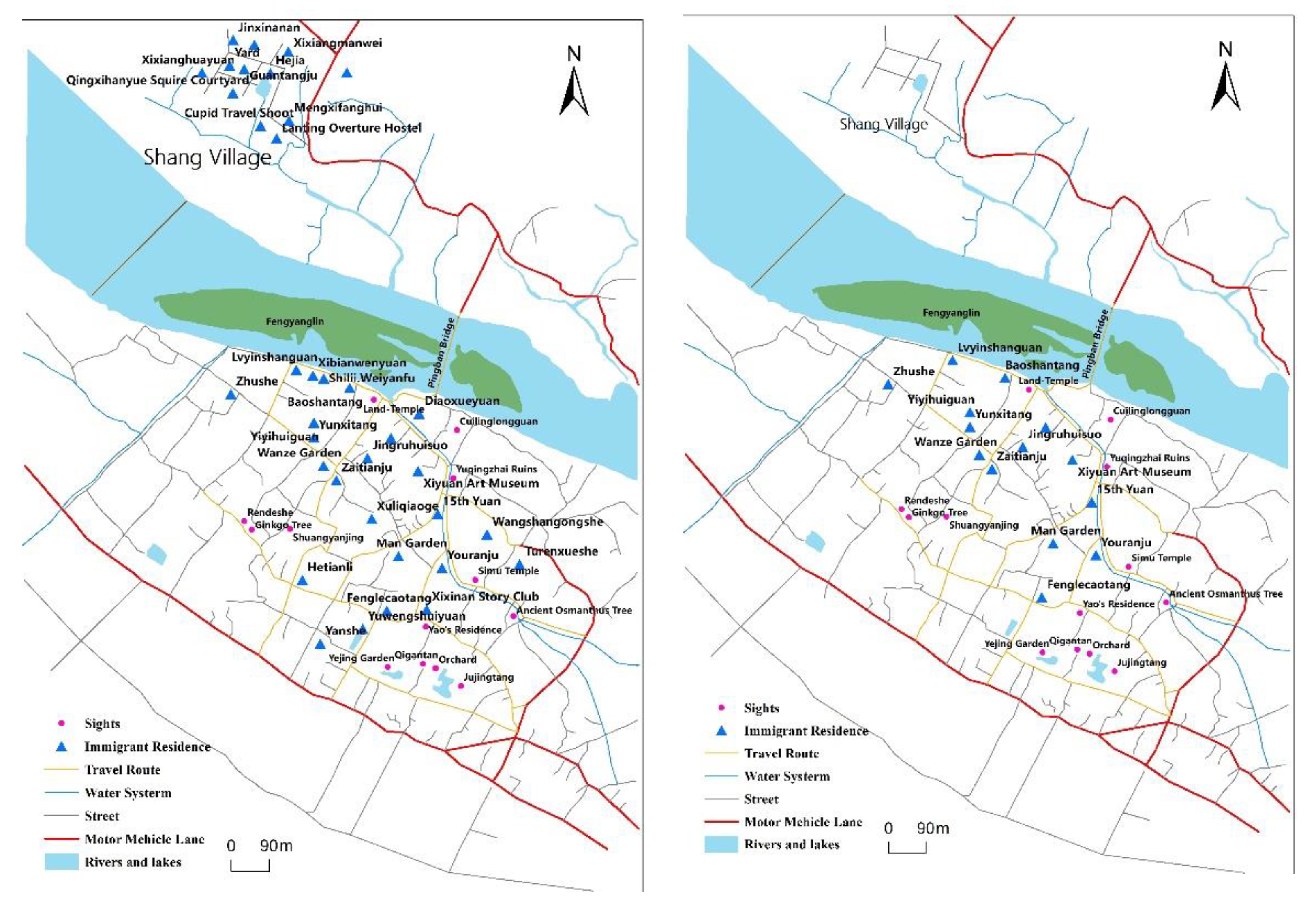
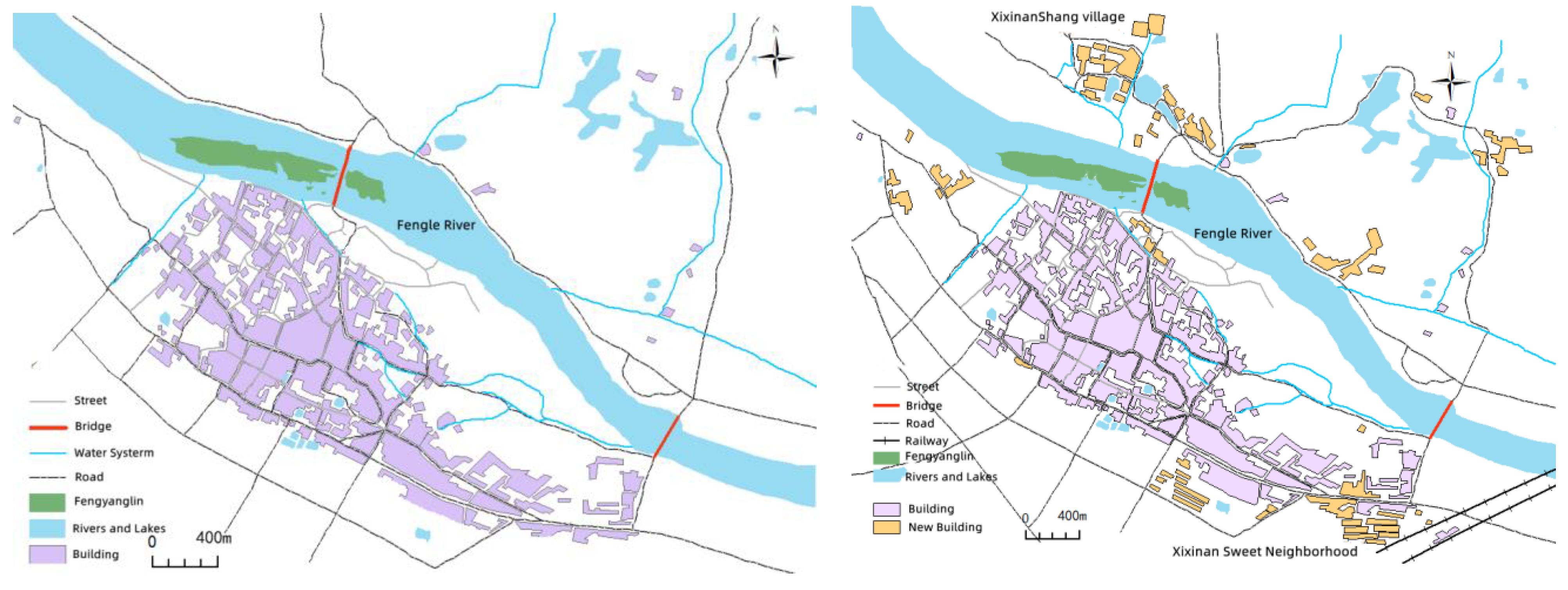
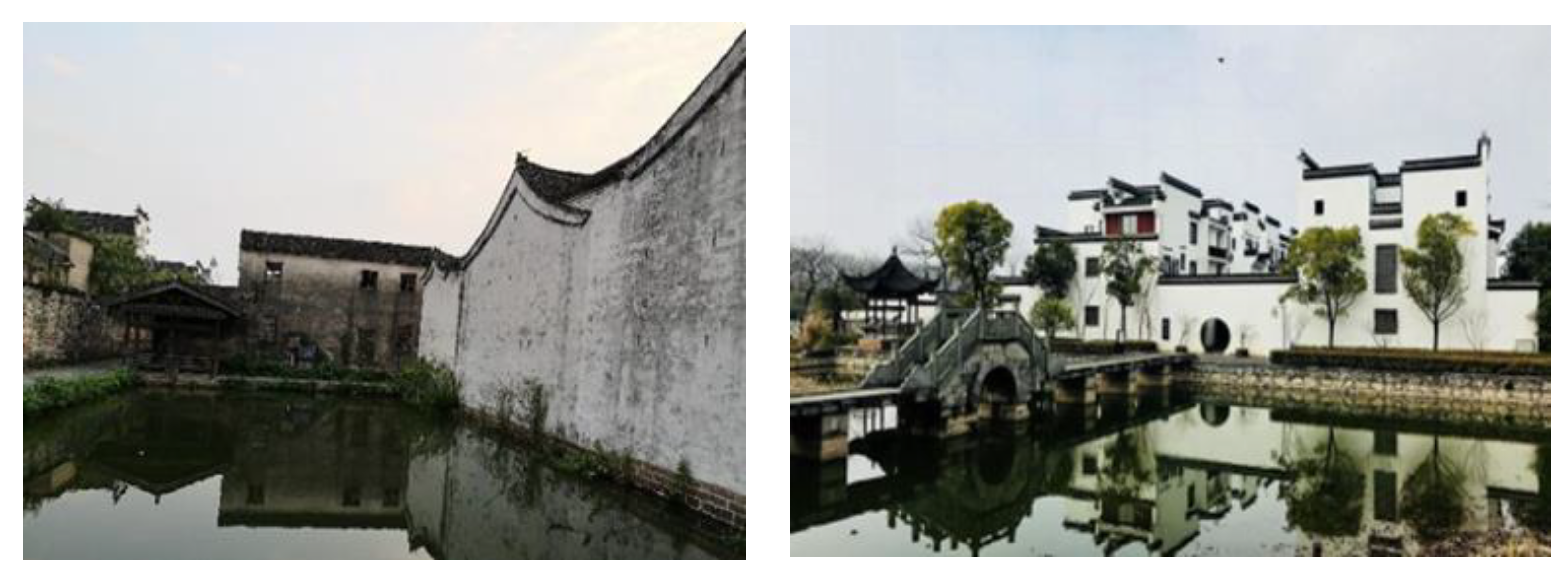
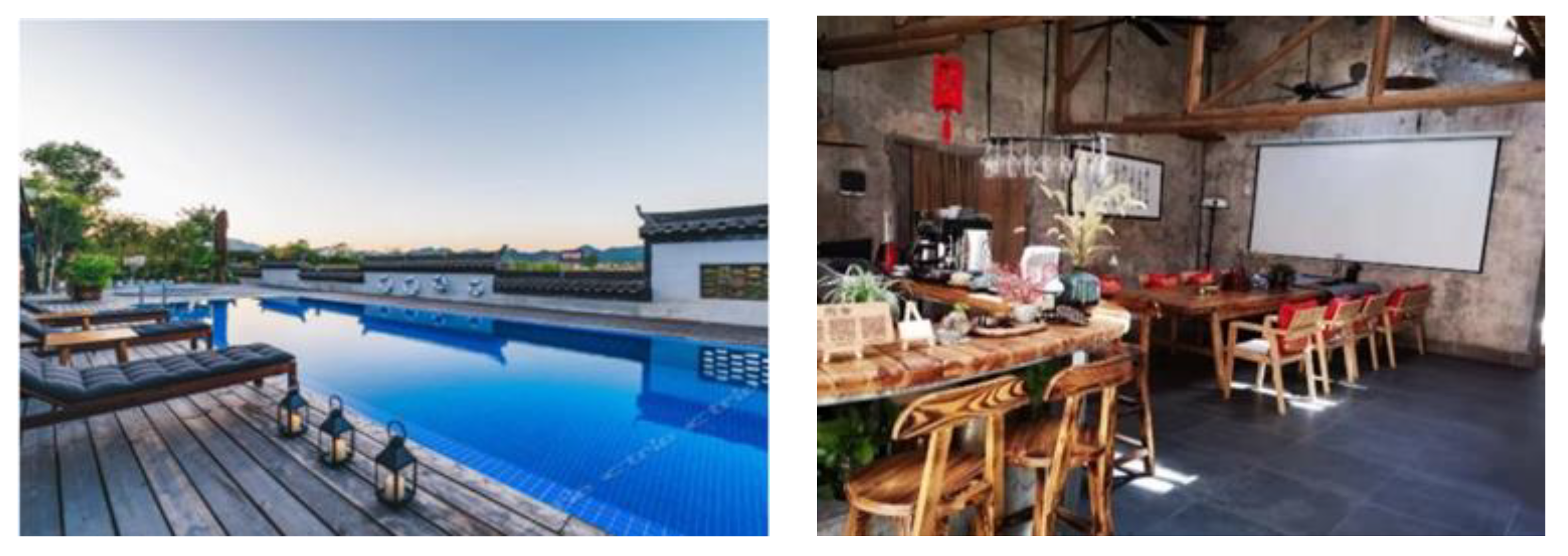

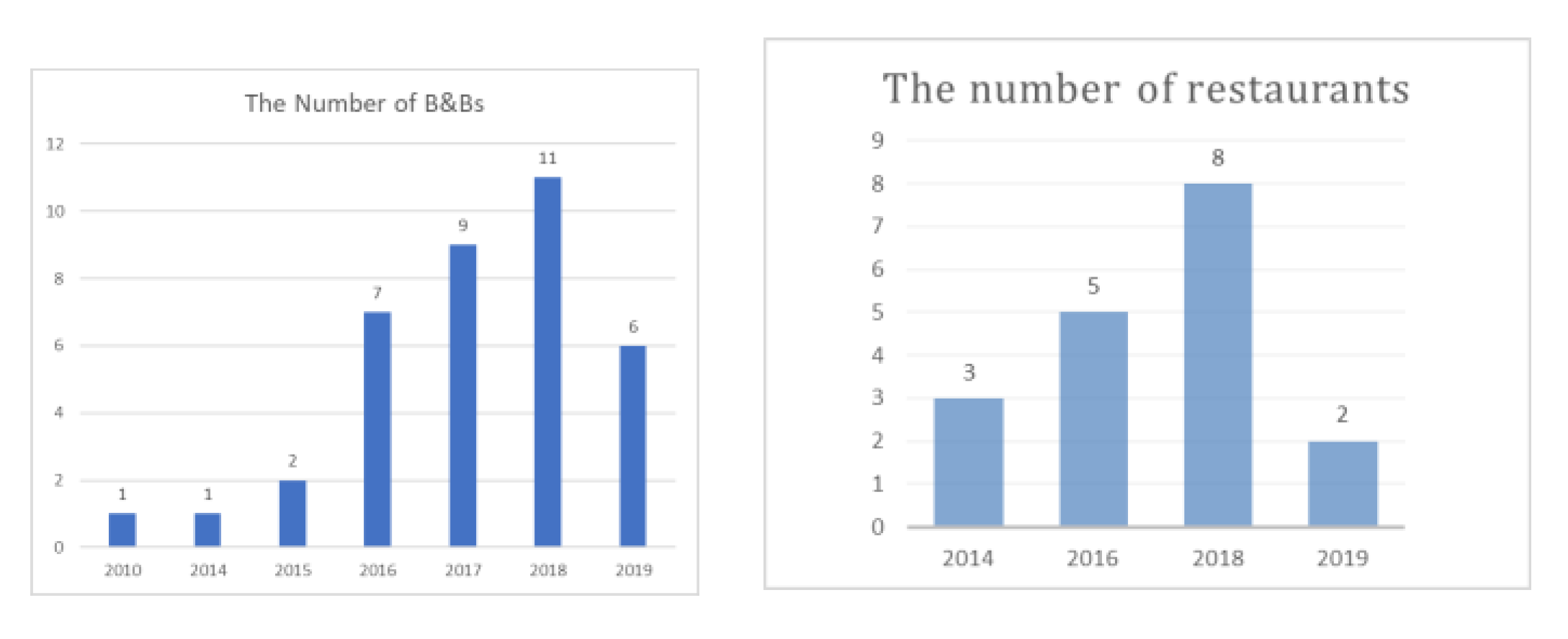
| Data Coding | Transcript of Interview | Concept Extraction |
|---|---|---|
| A01 | Like us immigrants, the architectural style of each family is different, bringing in the outside culture, design elements. We are highly educated people. After these people come in, it is not only a pull to the local economy, especially to the local villagers’ ideas change. | Cultural impacts, architectural landscapes, conceptual shifts |
| …… | …… | …… |
| B01 | It has not been overdeveloped and is largely uncommercial, with generations of villagers quietly farming the land. Shady trees, cool and pleasant, here you can breathe the sweet air at ease, listen to the melodious birdsong, soothe the hot summer irritable mood. | Pristine, quiet, relaxing, cozy |
| …… | …… | …… |
| C01 | I miss the childhood in my hometown very much, or the home life is good, very quiet, very comfortable, free, every day in the village to take a walk, chat with pedestrians, very happy. | Nostalgia, homesickness plot |
| …… | …… | …… |
| D01 | Now there are many outsiders in the village, not much before, about 5 or 6 years ago. Most of the newcomers are engaged in tourism. They buy or rent a house to open a homestay inn. More and more tourists come here. | More outsiders, more tourists |
| …… | …… | …… |
| E01 | The most obvious changes are the construction of high-speed railway stations and roads. which not only make it easier for villagers to travel, but more importantly, foreign capital will come here to invest. | Transport improvement, investment |
| …… | …… | …… |
| Year | Ancient Residential House Price/m2 | Year | Ancient Residential House Price/m2 |
|---|---|---|---|
| 2009 | approximately CNY 600 | 2016 | approximately CNY 2700 |
| 2012 | approximately CNY 1300 | ||
| 2018 | approximately CNY 10,000 | 2018 | approximately CNY 5400 |
Publisher’s Note: MDPI stays neutral with regard to jurisdictional claims in published maps and institutional affiliations. |
© 2022 by the authors. Licensee MDPI, Basel, Switzerland. This article is an open access article distributed under the terms and conditions of the Creative Commons Attribution (CC BY) license (https://creativecommons.org/licenses/by/4.0/).
Share and Cite
Lu, S.; Rao, X.; Duan, P. The Rural Gentrification and Its Impacts in Traditional Villages―A Case Study of Xixinan Village, in China. Sustainability 2022, 14, 10077. https://doi.org/10.3390/su141610077
Lu S, Rao X, Duan P. The Rural Gentrification and Its Impacts in Traditional Villages―A Case Study of Xixinan Village, in China. Sustainability. 2022; 14(16):10077. https://doi.org/10.3390/su141610077
Chicago/Turabian StyleLu, Song, Xiaofang Rao, and Pengxiao Duan. 2022. "The Rural Gentrification and Its Impacts in Traditional Villages―A Case Study of Xixinan Village, in China" Sustainability 14, no. 16: 10077. https://doi.org/10.3390/su141610077
APA StyleLu, S., Rao, X., & Duan, P. (2022). The Rural Gentrification and Its Impacts in Traditional Villages―A Case Study of Xixinan Village, in China. Sustainability, 14(16), 10077. https://doi.org/10.3390/su141610077





